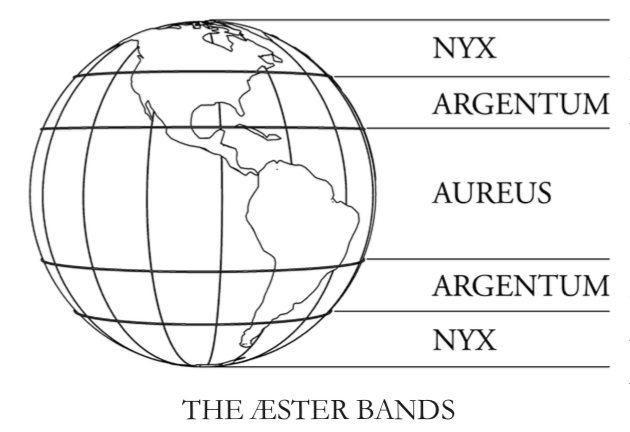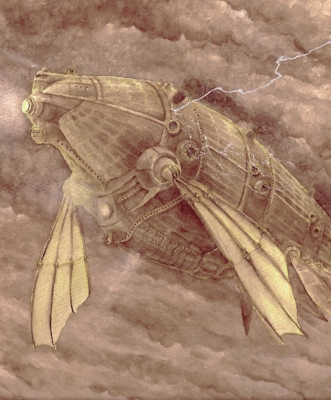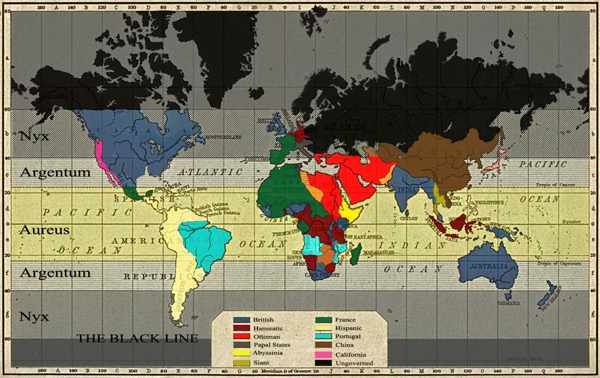One of my friends commented recently that I should do some blog posts about the Æsterverse. After all, it’s what I’ve been writing the longest and it’s what got me started writing seriously. A pretty fine idea!
I’ll start with an overview of the world. Obviously, there isn’t enough space in a blog to go into detail, but this should give an idea of the world my first book “The Tomahawk Incident” exists in as well as the follow on books and other stories.
First off, let’s get the name thing out of the way. Æster is pronounced like the name ‘Esther.’ Purists will complain that the Æ should be pronounced like an ‘ay’ combination, but that’s not the way it works in the Æsterverse. The name was coined by a scientist in the world as a combination between the chemical concept Ester and that of Æther. Voila! Æster pronounced like Esther.
One of the first things you need to know about the world of the Æsterverse is that it’s post-apocalyptic. The Rise was a twenty year period that drove humanity to the brink of extinction. It began in 1861 with the Æster’s first appearance and ended when it settled into its final form. By then, two-thirds of the human population on Earth had been extinguished. The Rise also changed the map of the world, both physically and politically. There were catastrophic seismic changes and the earth’s magnetosphere was disrupted. There can be over a dozen ‘magnetic norths’ at any given time now. Needless to say, magnetic compasses are useless, relegated to the trash heap of history like many other things as quaint relics of the world that used to be. Ocean levels rose one hundred feet to inundate coastlines and drown capitals. Never before seen cataclysmic weather slashed across the globe. And finally, Human action in the face of what seemed to be the end of the world spawned decades of unimaginable suffering and death.
The second thing you need to know is that the apocalypse is over. We clawed our way back from the edge of the precipice. Humanity stubbornly refused to succumb to what seemed inevitable. The world I wanted to write is summed up in the phrase,
We now stand on the brink of a Golden Age, if we are bright enough, brave enough and bold enough to seize it.
The dying is over and wonders never before imagined have been wrought in the aftermath of the awful years of the Rise.
What is the Æster?
The æster is many things, but I’ll start with its global effect. The æster’s clouds cover two-thirds of the earth’s surface, stretching from the poles to the tropics at twenty-three degrees north and south latitude. It’s clouds are densest at the poles growing progressively thinner as you travel toward the equator. From the poles to forty degrees north and south latitude, the region known as the Nyx, no sun reaches the earth’s surface at all. By the time you reach twenty-three degrees north and south, it’s thin enough that the sun comes through the æster’s thin clouds. The equator, and to the line of the tropics at twenty-three degrees north and south there is no æster cloud cover. This band around the equator where the sun still shines is called the Aureus, from the Latin Aurei for golden. The band of progressively increasing cloud cover between the Aureus and the Nyx is known as the Argentum.

The æster is a volatile gas with numerous significant properties. To answer the nuclear winter question that always comes up, the æster’s volatility makes it act like a thermal blanket, keeping the earth’s surface temperatures from plummeting as they normally would when deprived of so much of the sun’s warmth.
Æster is conductive, flammable, refinable into fuel, and corrosive. In the right conditions, it is capable of rendering flesh to dust in a matter of minutes. Having two-thirds of the earth’s surface covered in such a substance does not create a recipe for survival. Fortunately, one of the æster’s significant phenomena pulls it away from the earth’s surface. Counter to logic, it grows denser the higher in altitude you go, what is referred to in the world as “deeper” into the æster. The “æster floor,” is normalized at ten thousand feet through most of the habitable world. Below this, the environment is free of æster. This allows life to exist on the ground even in the Nyx. The æster floor is also the point where its concentration becomes sufficient for the æster’s most extraordinary property to come into play – the Draw.
The draw pulls objects upward into it allowing giant vessels called æsterships to travel within its churning, corrosive clouds. The draw also allows titanic platforms to exist, some anchored to the ground, others floating free. Scientists in the world have described the æster as an inverse ocean. Objects “sink” upward into the clouds, the æster growing more dense the higher in altitude you go in the same way water pressure increases the deeper you go in the ocean. With the increase in the æster’s density comes a corresponding increase in the power of the draw. At a certain depth, a vessel’s engines can no longer fight the power of the draw and the ship is pulled upward to their doom. Nothing – weather balloons, scientific instruments or anything else has ever survived above a certain altitude, or depth in the æster. It is assumed that the powerful corrosive and violent forces beyond a certain point simply destroys whatever reaches these depths and they are torn down into their chemical components, possibly to create more æster. But no one knows.
Scientists and philosophers have theorized what the æster’s origin is, or what could have begun the cataclysms of the Rise. But even decades after its first appearance, the æster remains as much a mystery as the ocean’s abyssal, frigid depths.


COMMENTs:
0